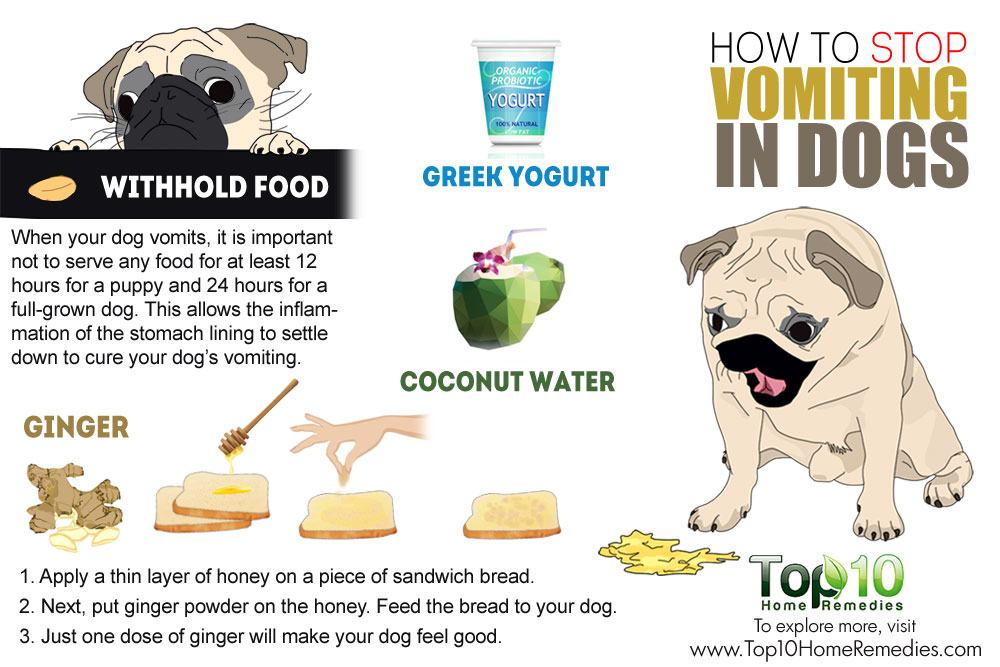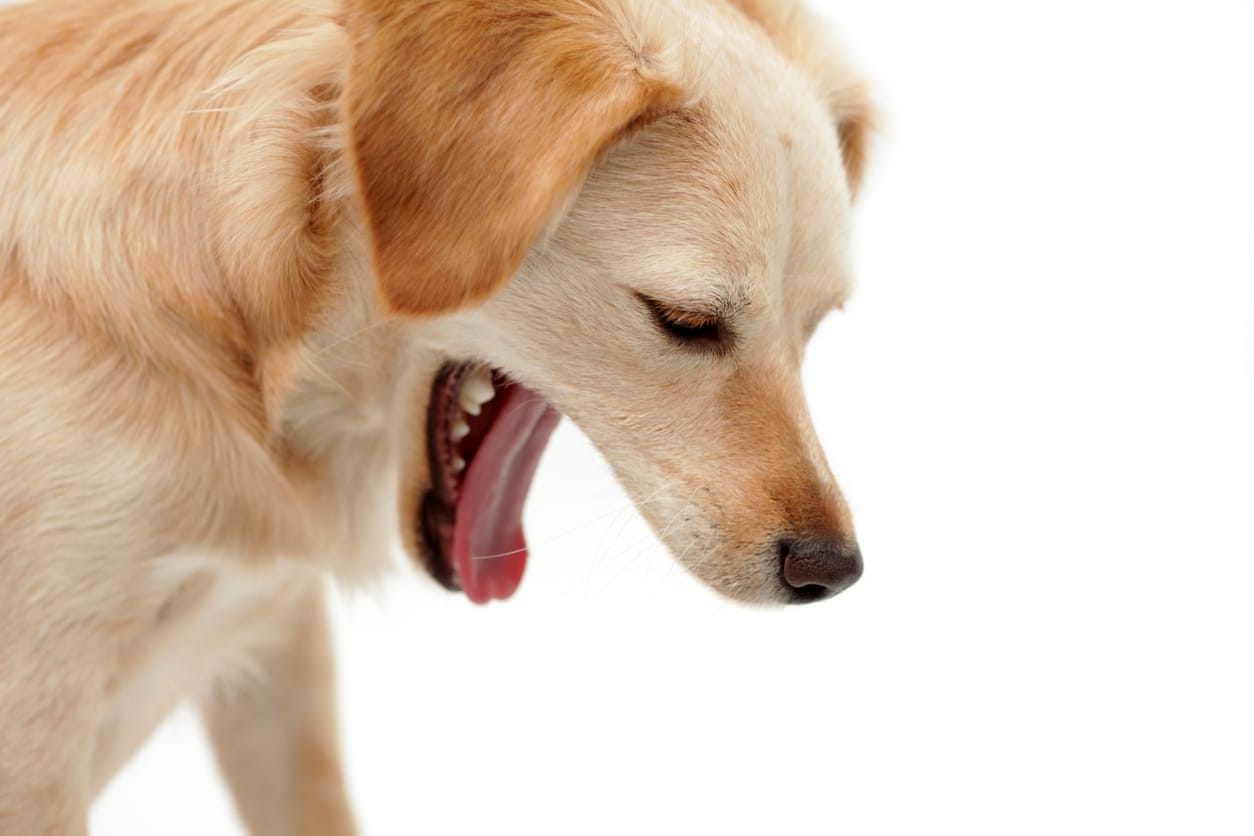When dogs vomit, they are forcefully ejecting the contents of their stomach and upper small intestine, bringing food, fluid, and debris. Transitioning to a new dog food.
Causes for Dogs Vomiting Undigested Food Dog's Upset Stomach
Regurgitation is the return of food into the oral cavity after it has been swallowed.
:max_bytes(150000):strip_icc()/vomiting-in-dogs-1117844_final-c25509355e314605a742be86d2bc671f.png)
Food for dog that vomited. Starve for a short amount of time. Help them to get relieved and understand that they are in pain. The diet changes will fix mild cases of regurgitation or vomiting.
Chicken and rice are prime ingredients in many dog foods, and these mild foods sit well on upset canine stomachs… shredded chicken. If your dog is throwing up undigested food do to eating habits or a food indiscretion, you probably have nothing to worry about. You need to identify the technique of feeding, so that no barrier in the stomach causes vomiting in them.
Summarizing the causes of vomiting in the dogs A combination of the esophageal muscles and gravity did. If your dog keeps ingested food down, offer a small amount of.
If they are eating grass on a regular basis, however, it is a possibility that they. If your dog vomited worms, there is a possibility that there is a. A heavy intestinal parasite load can cause digestive upsets, leading to vomiting and diarrhea.
Many dogs seem to enjoy eating grass, too — if you see the color green in your dog's vomit, this is usually the reason. Caring for a dog who has vomited. Tell your veterinarian immediately if your dog.
Many potential dehydration remedies or many. Sudden changes to your dog's food may result in gastrointestinal issues, so switching dog food (varieties or brands) too quickly can upset his stomach. If your dog does not vomit, give him a little more food every hour or two.
If you choose to feed beef and rice, be sure to skim off any fat that rises to the. If the dog doesn’t show any other symptoms, they should be. Here are a few things you can try at home during that time.
Most pets throw up food and undigested matter at some time or another during their entire life span. If your dog does not eat, pick up the meal and try again a few hours later. If your dog has only vomited once and seems otherwise well, you may decide to wait and see if they vomit again before taking them to the vets.
Garbage, table scraps, socks, batteries, stones, bones, sticks — the possibilities are endless. If your dog throws food right after eating or a few hours later, there are a number of steps you can take including: So, change into slow feeder and help your dog to eat the food properly, allowing the same to digest quickly.
Introduce food slowly or feed a bland diet of unseasoned rice and chicken or boiled ground beef and rice. A bland, easily digestible food such as cooked white rice mixed with boiled white meat chicken (no bones or skin) is ideal, but you can also use a small portion of your dog’s regular diet. You should make sure your dog is well dehydrated, too.
If this doesn’t work, your veterinarian may recommend the following: Some dog owners have noticed improvements by adding fiber under the form of plain pumpkin (not the pie type that has spices added) added to their dogs' meals. If your dog is throwing up undigested food you needn't panic.
Once your dog has not vomited for at least 6 hours, you can offer a small meal. Sometimes, it might be worthy, trying to feed a light formula dog food considering that more fiber in dog food helps increase motility by moving the food forward, suggests veterinariandr. It’s important that after your dog has vomited to help them avoid becoming dehydrated by providing clean, fresh water.
Food and water for vomiting dogs. Create a mixture of 1 part lean meat to 5 parts carbohydrate. Strive to keep food selection for your dog as easy as possible.
Although it's normal for dogs to vomit occasionally, vomiting that's accompanied by diarrhea or bloody stools needs to be diagnosed and treated promptly. Dogs often eat grass when they have an upset stomach, which can sometimes induce vomiting. If your dog vomits again at the next meal, but the vomiting stops after a few hours, try offering your dog a small amount of water first.
The food never started getting digested before it was expelled — your pup’s abdominal muscles didn’t push the stomach contents back up into the esophagus and mouth. Have one dedicated for the dog (so that you don’t later stick it in your mouth). A perfectly healthy dog can vomit out of the blue and then go about the rest of the day just like everything’s normal.
Worms can obstruct the gastrointestinal (gi) tract, which can cause vomiting and/or diarrhea. Here's a goodrecipe to create an ideal food for vomiting dogs which may help the animal feel better and enjoy a healthy and delicious treat. Before you make the decision to change dog foods, check with your.
Provide plenty of fresh water. Take away food and allow the dog to fast for 12 to 24 hours. Those who are looking for an answer to the question «should i feed a dog that has vomited?» often ask the following questions:
🐶 what to feed a dog that has vomited? To take the temperature, use a digital thermometer. Grass is a common ingredient in dog vomit.
Your dog might have simply eaten food too quickly or ingested a little too much grass in the backyard. Coat the end with a. If your dog begins to drink more or less water, this could be a cause for concern and you should consult a vet as soon as possible.

How to Stop Vomiting in Dogs Top 10 Home Remedies
Causes of Dog Vomiting and Dog Vomit Color Guide Nom Nom


